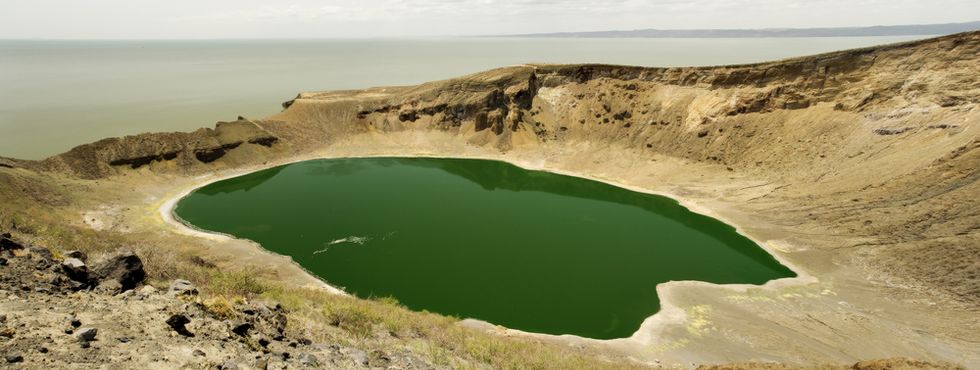
The tools were found in Lake Turkana, Keyna. Here Panoramatic view of Flamingo lake on Central island,Lake Turkana, northern Kenya (Photo credit: Shutterstock)

Until this week, archaeologists believed the world's oldest tools were 2.6 million years old. New research suggests though a different set of tools dates back 700,000 years later.
Presenting their findings at the Paleoanthropology Society's annual meeting, Sonia Harmand from Stony Brook University in New York detailed how tools found at the Lomekwi 3 archaeological site in Lake Turkana, Kenya, are up to 3.4 million years old.
"The LOM3 tools mark a new beginning to the known archaeological record," Harmand's abstract for the meeting stated.

The discovery was originally made in 2011 when the archaeologists were digging at a site in Lake Turkana. There they found stone artifacts that were "clearly knapped," a type of intentional flaking technique, Harmand described, according to Michael Balter for Science magazine.
Balter went on to note that Harmand doesn't think true Homo sapiens created the tools, based on how old they are, but earlier hominins like "australopithecines similar to Lucy or by Kenyanthropus." Balter added that Harmand said they discovered the tools was a happy accident:
They took a wrong turn and stumbled upon another part of the area, called Lomekwi, near where Kenyanthropus had been found. The researchers spotted what Harmand called unmistakable stone tools on the surface of the sandy landscape and immediately launched a small excavation.

John Hawkes, an anthropology professor at the University of Wisconsin, Madison, wrote on his blog more about the significance of the findings:
I can’t really comment more informatively about this until the work is published so that I can evaluate it. The obvious implication is that stone tools were invented and used by multiple lineages of early hominins. Just as there were different styles of body shape and bipedal mechanics among early hominins, there were likely different styles of technical traditions. A few of these were stone, but almost certainly there were perishable tool traditions among most populations of early hominins. Just taking what we know from living chimpanzee populations, with different traditions of tool use, complex tool sets made from perishable materials, and occasional use of durable objects made from stone. All hominins added initially was the deliberate flaking of stone to make objects recognizable in the archaeological record.That is to say, humans have elaborated upon a technical ability that is latent among all the apes. This technical ability rests upon social learning skills that are necessary in chimpanzee societies, and early hominin societies inherited those skills from the common ancestors of humans and chimpanzees. After millions of years of exploring this technical space, some experiments led to the manufacture of stone flakes and choppers. Possibly one or more experiments led to the manufacture of bone points or piercers, as evidenced at Swartkrans and Kromdraai, and often attributed to robust australopithecines.
Alison Brooks with George Washington University told Balter Harmand's finding is "very exciting."
"They could not have been created by natural forces," she said, adding that the "dating evidence is fairly solid."
(H/T: Scientific American)
—
Front page image via Shutterstock.